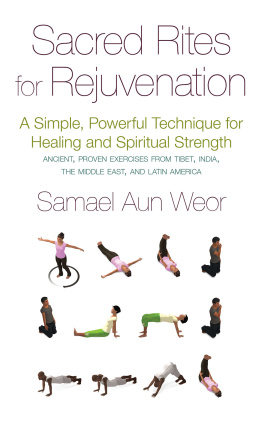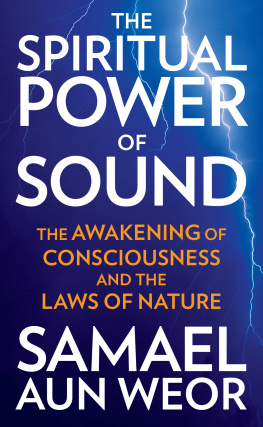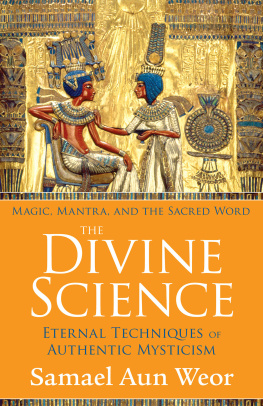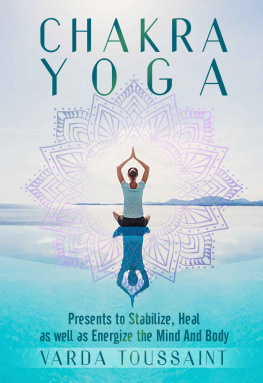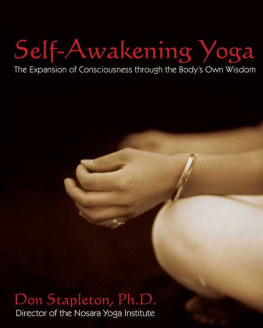Sacred Rites for Rejuvenation
A Simple, Powerful Technique for Healing and Spiritual Strength
Ancient, Proven Exercises from Tibet, India, The Middle East, and Latin America
by
Samael Aun Weor
Glorian Publishing
Thank you!
Your purchase of this electronic book helps to support Glorian Publishing, a non-profit publisher dedicated to providing humanity with the essential wisdom that resides in the heart of all the worlds great mystical and religious traditions. Your purchase of this book directly impacts our ability to create effective spiritual resources for humanity, like our websites, books, videos, retreats, podcasts, internet radio, prison programs, book donations to libraries, hospitals, and other institutions, and much more. On behalf of the souls who are being aided by these efforts, we sincerely thank you.
This book is available in a print edition from booksellers everywhere. It is also available as an online book at GnosticTeachings.org.
All of our works are made possible by the kindness and generosity of sponsors. If you would like to make a tax-deductible donation, you can donate online through Network for Good, or alternatively, you may send donations to the address below or visit our website for other methods. If you would like to sponsor the publication of a book, film, video, or other project, please contact us at 877-726-2359.
Glorian Publishing
PO Box 110225
Brooklyn NY 11211 USA
Phone: 877-726-2359
Visit us online at gnosticteachings.org
Publication Data
Sacred Rites for Rejuvenation
A Glorian Book / 2012
This Edition 2012 Glorian Publishing
Print ISBN: 978-1-934206-79-9
Ebook ISBN: 978-1-934206-84-3
Contents
Editors Introduction
The following text is transcribed from oral instructions given by Samael Aun Weor to a student. The transcribed text was initially published by that student decades ago in Spanish in the form of a narrative, and included many personal anecdotes and writings unrelated to the teachings. In later years, other Gnostic students decided to publish an edition that removed the extraneous material, resulting in a series of completely unrelated chapters. In 2008, Glorian Publishing translated and published the first English edition of that book. However, new readers were very confused by the jumbled collection of chapters, causing many to believe that Samael Aun Weor wrote the book in that form, which reflected badly on the teachings. Therefore, in this new edition, we have removed the extraneous chapters and focused entirely on the exercises. For those who are interested in reading the other chapters, they are available as online articles at gnosticteachings.org.
Furthermore, this book should not be read as an introduction to the teachings, nor even as a thorough explanation of the exercises themselves. These exercises come from an ancient, protected tradition, whose full depth can be accessed only by those who put these exercises into practice and awaken their consciousness.
To learn about Gnosis, the teachings of Samael Aun Weor, and awakening consciousness, visit gnosticteachings.org.
Yantra Yoga
The Sanskrit word yantra implies restraint or firm support, and can literally be translated as machine, instrument. The word yantra has different implications depending upon which tradition is using it.
In Hinduism, this term is usually used in Hindu Tantra (esoteric teachings) in reference to mystical diagrams or forms utilized in meditation.
In Buddhism, yantra refers to a series of bodily movements taught in Buddhist Tantra to specially prepared students. The Indian Tantric Master Padmasambhava and his student, a Tibetan scholar and monk named Vairochana, are credited with establishing Buddhism in Tibet (especially Dzogchen) in the eighth century A.D., as well as setting the foundations for Tibetan medicine and a highly sophisticated series of physical and energetic exercises called Yantra Yoga (Tibetan: khrul khor) whose purpose was to establish a strong foundation for spiritual development.
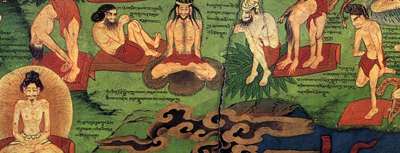
Yantric postures depicted in wall murals of the Dalai Lamas Temple in Lhasa
Today, varieties of Yantric exercises are practiced in some of the schools of Tibetan Buddhism, but kept only amongst the initiated. As Samael Aun Weor said in the following book, some of these exercises have been described publicly, but in an incomplete form.
The true Yantric exercises have some relationship with Hatha Yoga (now very popular in the West), Chi Gung, and various martial arts, all of which originated with the intention of keeping the physical body fit enough to withstand the intense demands of spiritual development. Clearly, Hatha Yoga and the martial arts have largely forgotten their spiritually-focused roots, the evidence of which is their complete inability to awaken the consciousness of their practitioners. The exercises described in this book, however, are very different, and when practiced faithfully, can awaken the consciousness and provide many other essential benefits.
Among the Tibetan Buddhist schools, there are several variations and lineages of Yantra Yoga. The exercises taught in this book are drawn from but not identical to those traditions. As stated herein:
These rites are not the exclusive patrimony of anyone. There are some monasteries in the Himalayas and in other places where these rites are practiced, mainly in a monastery that is called The Fountain of Youth...
I obtained some data from the mentioned monastery, which I know very well, and other data from other schools in India that I also know very well.
The Authenticity of the Author
Between 1950 and 1977, a mere twenty-seven years, Samael Aun Weor (which is a Hebrew name) wrote over sixty books (seventy if you include collections of lectures), gave thousands of lectures, and formed the worldwide Gnostic Movement, whose members number in the millions. Though these accomplishments are certainly impressive by any standard, they are merely the pale, terrestrial reflection of the work he accomplished internally, spiritually. And yet, in spite of his wisdom and generosity towards mankind, he said:
Do not follow me. I am just a signpost. Reach your own Self-realization.
His lifelong mission was to deliver to humanity the complete path toward the realization of the inner Being, or in other words, the total and exact science required by anyone of any religion, race, culture or creed who wishes to fully and completely develop the human potential.
When the mind is quiet, when the mind is silentthat is, when the mind is empty of thoughts, desires, opinions, etc.then, the truth comes into us.
To arrive at the experience of reality is only possible when all thoughts have ceased.
The eruption of the Void allows us to experience the bright light of pure reality.
That ever-present knowledge, which in reality is empty, without characteristics or color, devoid of condition, is the true reality, the universal compassion.
Your intelligence, whose true nature is the Void [sunyata; the Absolute]which must not be seen as a void of nothingness, but as that very intelligence without shackles: brilliant, universal, and happyis Cognizance, the Buddha, universally wise.
Your own empty cognizance and that brilliant and joyful intelligence are inseparable; their union forms the Dharmakaya, the state of perfect illumination.
Your own brilliant cognizance, empty and inseparable from the great body of splendor, has neither birth nor death: it is the immutable light, the Amitaba Buddha.

